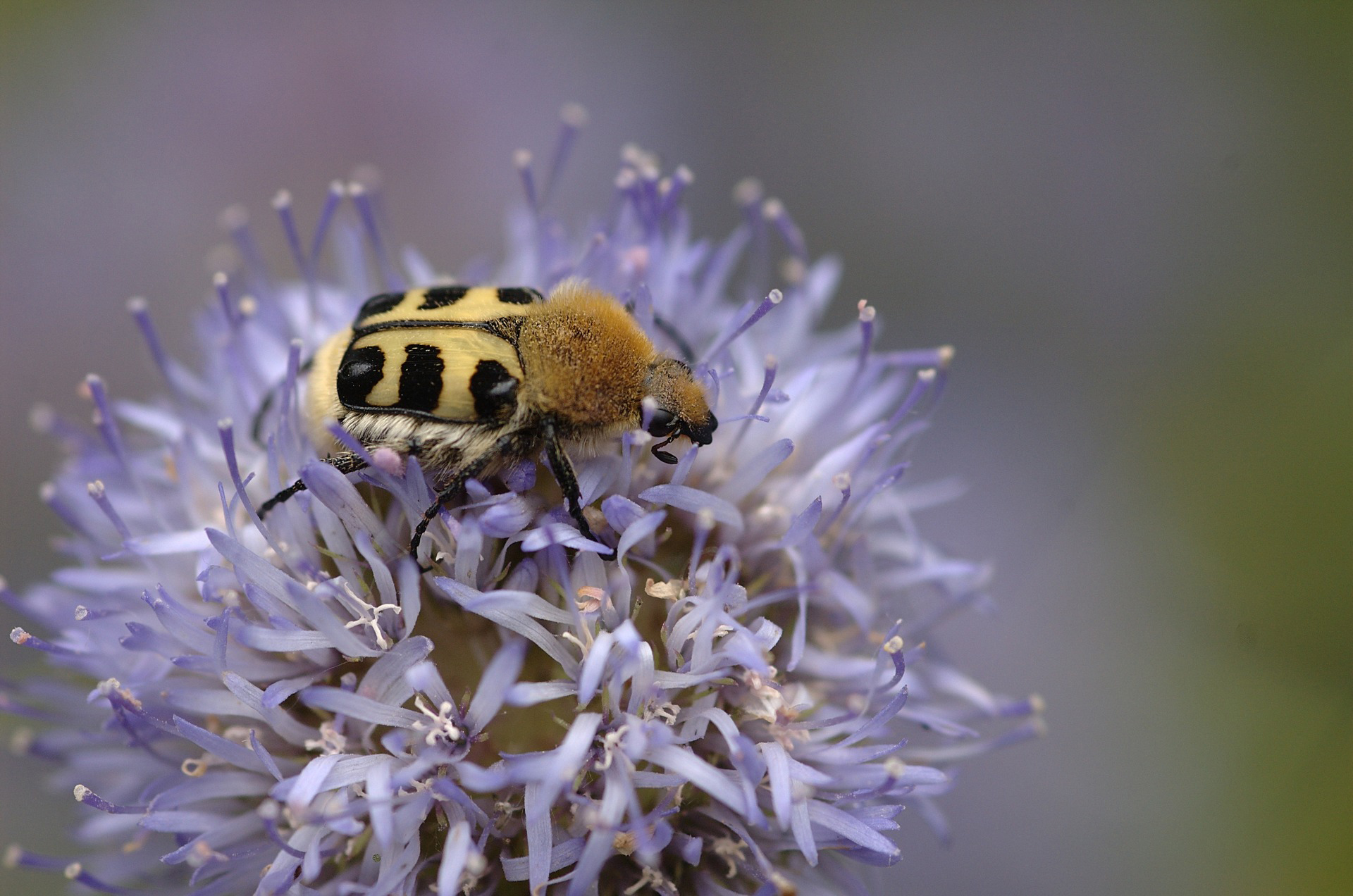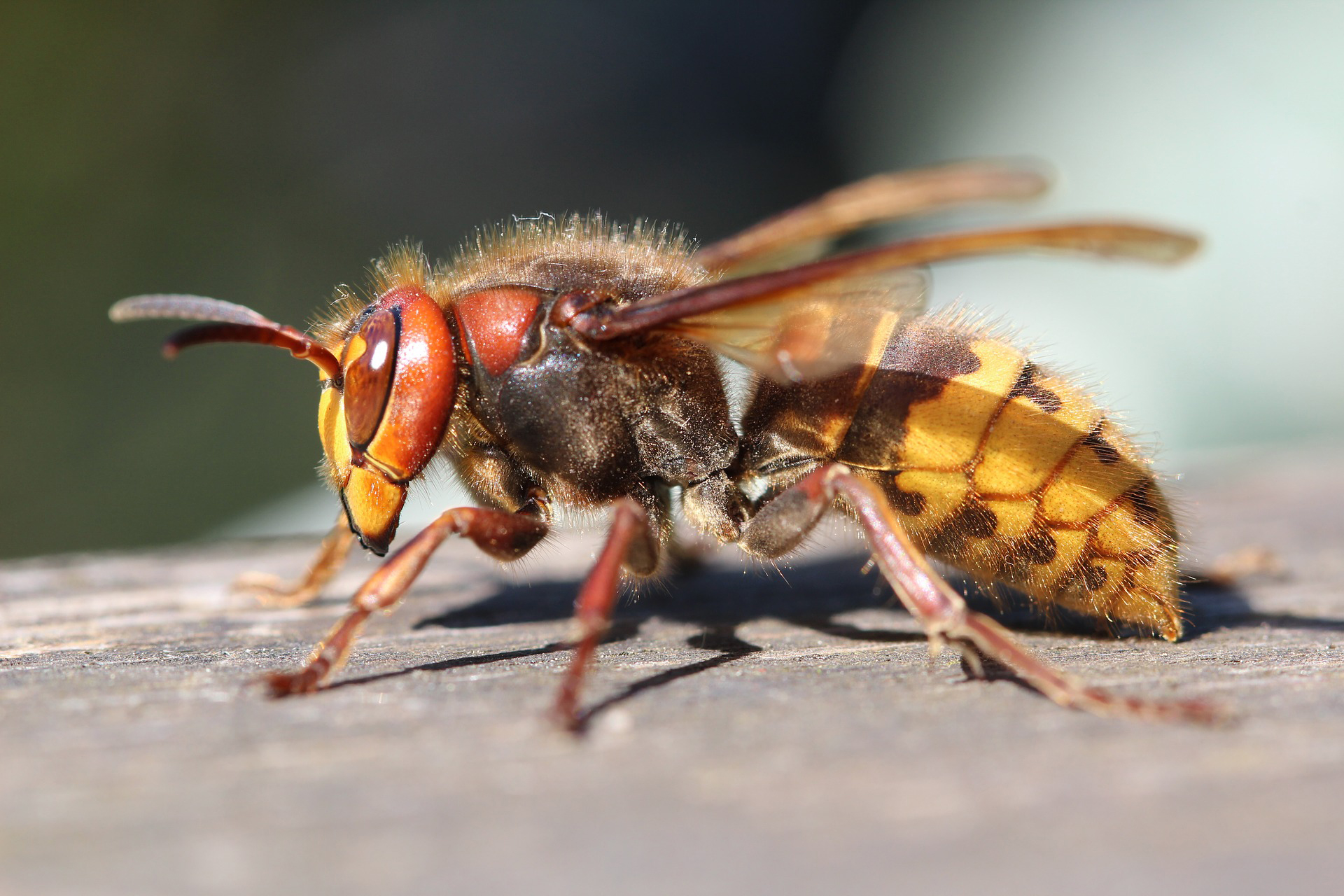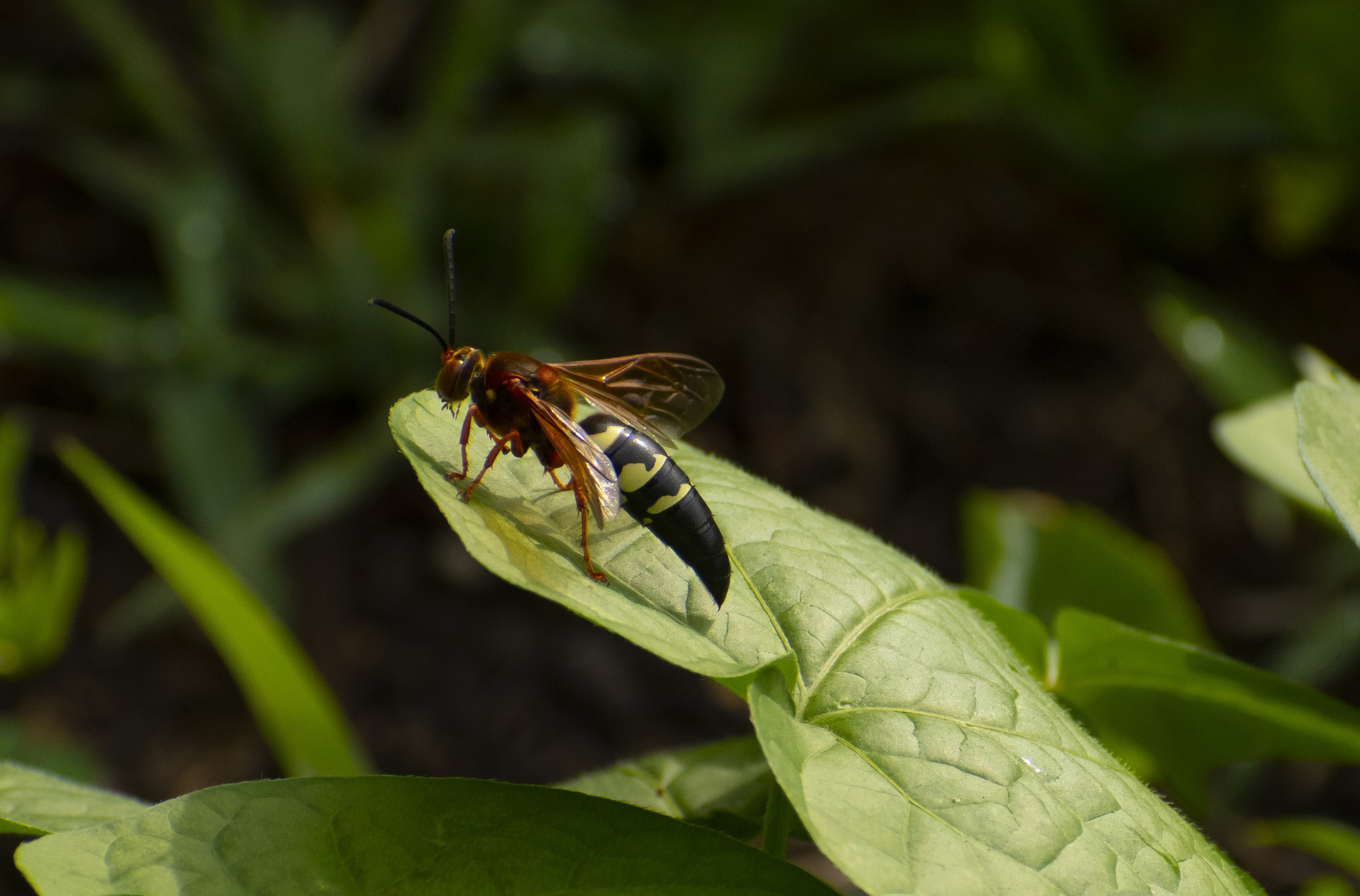Bees are characterized by their yellow striped colour. However, there are insect species that look like bees but are not. There are 20,000 bee species and many more insects, which can make it difficult to differentiate. The bee look-alikes don’t operate the same way as bees and contribute to the ecosystem in alternative ways.
As an avid gardener and outdoor enthusiast, I’ve come across my fair share of wasps. And while their stings can be painful, wasps are important pollinators and pest controllers. The tricky thing is, there are many insects that resemble wasps – complete with similar coloring and body shape. But looks can be deceiving!
In this article, we’ll explore 10 bugs commonly mistaken for wasps. You’ll learn how to identify key differences so you can separate the wasp imposters from the real deal. Being able to accurately ID insects in your yard and garden is useful for safety, as well as supporting biodiversity. Let’s dive in!
What Do Wasps Look Like?
Before we look at wasp mimics let’s go over some key wasp identification features
-
Coloring: Wasps are often black and yellow, white, or brown. Some species have more intricate patterns.
-
Body shape: Wasps have a distinct narrow waist and elongated, streamlined abdomen. Their bodies are generally smooth and shiny.
-
Wings Wasps have two pairs of transparent wings that are longer than their abdomen The wings are folded longitudinally when at rest
-
Legs: Wasps have six long, slender legs that dangle during flight.
-
Antennae: Their antennae are short with 12 or 13 segments.
Now that we know what to look for, let’s examine 10 insects commonly mistaken for wasps!
1. Bees
With their black and yellow stripes, bees bear a strong resemblance to wasps. But bees tend to have fuller, furrier bodies and shorter antennae than wasps. They also carry pollen on their hind legs.
While wasps are predators, bees primarily feed on nectar and pollen. Their stings are used for defense, not hunting prey.
2. Hoverflies
Hoverflies mimic wasps with their yellow and black markings. But they only have one pair of wings (wasps have two) and their eyes are more prominent. The key giveaway is that hoverflies don’t have stingers at all!
As helpful pollinators, hoverflies use their wasp-like appearance to avoid predators. Their larvae eat aphids and other plant pests.
3. Crane Flies
With their long legs and skinny bodies, crane flies resemble giant mosquitoes more than wasps. But their dangling legs and slight yellow coloring can cause confusion with wasps.
However, crane flies don’t have stingers. They don’t even feed as adults – their sole purpose is reproduction.
4. Spider Wasps
At a glance, female spider wasps look incredibly wasp-like. But they have a distinct curved abdomen that narrows near the waist. Plus, their wings are darker at the tips.
True to their name, spider wasps hunt spiders to feed their larvae. Their stinger delivers a painful injection of venom.
5. Wasp Moths
Several moth species mimic wasps with their black, yellow, and brown markings. Look for the telltale signs of moths like fuzzy antennae, tent-shaped wings, and a furry thorax.
Interestingly, many wasp moths don’t actually feed as adults. They rely on stored energy from their caterpillar stage.
6. Horntail Wasps
Horntail wasps are actually non-stinging insects. The females have a long, prominent ovipositor which looks like a stinger but is used to lay eggs.
Unlike true wasps, horntails have 10 or 11 antennal segments. Their larvae infest trees and timber.
7. Flower Flies
Flower flies resemble small bees or wasps as they visit garden blooms. However, flower flies only have one wing on each side. And their eyes are distinctly red or pink.
The larvae of flower flies prey on aphids – making flower flies a welcome friend for gardeners and farmers.
8. Bee-mimicking Robber Flies
Robber flies are aerial hunters with a voracious appetite for other insects, including bees and wasps. Some larger robber fly species mimic bees with dense abdominal stripes.
Focus on their pointed mouthparts, long legs, and stout bodies. Robber flies impale their prey midair using a sharp beak.
9. Ichneumon Wasps
At first glance, ichneumon wasps seem practically identical to regular wasps. But ichneumon wasps have a narrow waist and relatively longer, thinner bodies. And the females have a very prominent, thin ovipositor.
Ichneumon wasps use this needle-like ovipositor to lay eggs inside or on other insects. The larvae then feed on the host.
10. Velvet Ants
Velvet ants look nothing like wasps – they resemble large, fuzzy ants. The vivid red and black fuzzy “ants” are actually female mutillid wasps. Their dense hair coats provide insulation and protection.
Unlike nearly all other wasps, female velvet ants have no wings. But they can give an extremely painful sting if handled.
A Final Note on Identification
As we’ve seen, looks can be deceiving when it comes to stinging insects. Many mimics copy wasp warning colors to avoid predators. It takes a keen eye to distinguish between lookalikes based on details like wings, legs, and antennae.
If you’re uncertain about an insect’s identity, avoid handling it. Simply observe from a safe distance instead. Proper identification ensures you can tell friend from foe in your garden ecosystem.

What Are Bee Beetles?
Bee beetles are also known as small hive beetles for their predatory nature towards honeybees. They are wide with round abdomens. Bee beetles are hairy and have black stripes across their yellow abdomens.
The species originated from Africa, then arrived on other continents.
Bee beetle larvae are small white maggots that can be found invading honeybee hives.
Do Bee Beetles Sting?
Small bee beetles do not sting. Instead, they are built to be impervious to bee stings. Bee beetles have hard shells and tough wings. Their tough exterior leaves honeybees helpless against their invasion.
Bee beetles find honeybee hives through the scent of bees’ alarm pheromones and honey. Their goal is to feed off of the hive’s food sources and lay their eggs within. Some bees may gather together to wall off the bee beetle from entering. Other times, a bee beetle might stroke the bee’s antennae as a way of asking for food. Friendly bees will feed bee beetles.
The bee beetle larvae reside in the hive’s cells, where they eat off of the hive and defecate. Their presence slowly destroys the hive from the inside by causing leakages and other damage. The larvae’s waste is made up of yeast that smells like a honeybee’s alarm pheromones. This overwhelming scent will attract other bee beetles to the hive.
Do Bee Beetles Pollinate?
Bee Beetles do not pollinate since they don’t visit flowers. Their food source comes from the hives they invade rather than nectar directly from flowers.

Hornets are wasps that are related to yellowjackets. They look similar to yellow jackets with their long bodies and yellow and black patterns. They may have a brighter, more orange tint than yellow jackets.
There are only 20 hornet species. They prey upon other bees and insects.
Do Hornets Sting?
Hornets are dangerous stingers. They will sting when feeling threatened like other stinger species. However, they inject a large amount of venom with a single sting. Hornets produce more venom than other species because of their large size.
Hornets prey on bees and will grasp them out of the air in flight. They feed bees and other insects to their young.
Do Hornets Pollinate?
Hornets are important pollinators despite their aggressive reputation. Additionally, they contribute to eradicating and controlling pest populations. They eat insects like spiders and caterpillars.

What Are Cicada Killers?
Cicada killers are large wasps that are also known as the cicada hawk. They are narrow and have yellow and black abdomens. There are three yellow bands or stripes that distinguish them. Their thoraxes tend to be a more orange colour with some dull brown.
Cicada killers are solitary, which means that they do not belong to hives or colonies. They dig significant burrows in the dirt to reside in.
Do Cicada Killers Sting?
Cicada killers will sting but rarely do so to humans. They steer away from people but may be approached by animals. Their venoms can be harmful to pets like cats or dogs.
Cicada killers use their stingers to catch prey. Cicadas are a large part of their diet. They sting the other insect with venom to paralyze them; then, they will bring it to its nest to eat.
Do Cicada Killers Pollinate?
Like other wasps, cicada killers pollinate and control the pest population with their appetites.

Wasps That Are Actually Nice
FAQ
What bug is mistaken for a wasp?
-
Many hoverfly species mimic the appearance of wasps and bees, likely to deter predators, as wasps and bees are known to sting.
-
Similar Appearance:Hoverflies have slender, pointed abdomens and yellow and black stripes, making them look like smaller wasps.
-
Harmless:Unlike wasps, hoverflies are harmless to humans and do not sting.
-
Hoverflies are beneficial insects, as their larvae eat aphids, which are pests that feed on plants.
-
Distinguishing Features:Hoverflies have larger, rounder eyes than wasps, and their abdomens are shorter and more plump.
What is the insect that looks like a wasp?
- Appearance: Hoverflies are often black and yellow striped, making them look like smaller wasps.
- Harmless: They are completely harmless and do not sting.
- Beneficial: They are beneficial insects that help with pest control and pollination.
- Wings: They have only two wings, unlike wasps and bees which have four.
- Eyes: Hoverflies have much larger and rounder eyes than wasps, which have small, kidney-shaped eyes.
- Other names: Hoverflies are sometimes called flower flies.
Are mason wasps aggressive?
This species is solitary and not aggressive. It can be found in gardens and other open areas. Adults feed on flower nectar.
Are hoverflies harmful to humans?
Due to this coloration, they are often mistaken both by insect-eating birds and by humans for wasps or bees; they exhibit Batesian mimicry. Despite this, hoverflies are harmless to humans.
What insects look like wasps?
There are many species of wasps in the world, but there are also many insects that look like wasps, even though they aren’t. Some of these insects include bees, hoverflies, wasp beetles, wasp moths, and horntails. Paper wasps, yellowjackets, hornets.
How long does a wasp sting last?
A wasp sting typically lasts for a few hours to a few days. Initially, there is a sharp pain, followed by redness, swelling, and itching at the sting site. Most symptoms gradually improve over the first 24 hours. However, in some cases, individuals may experience lingering discomfort or localized swelling for a few days. Severe allergic reactions can occur, leading to more prolonged and serious symptoms, which require immediate medical attention. If you suspect an allergic reaction or if the symptoms persist or worsen, seek medical help promptly.
Do black bugs resemble wasps?
All black bug species that look like a wasp are scary, thanks to the reputation of wasps as stinging insects. Some particularly nasty ones include yellow jackets and similar social wasps.
Do flies look like wasps?
Hoverflies are pollinators, so like wasps, they spend a lot of time nectaring on flowers. Many species of thick-headed flies also look like wasps. These flies, as the name suggests, have heads that are thicker than their thoraxes, and many of them have a similar size and appearance with wasps.
What does a wasp look like?
They have yellow and black banding and tend to hover, making them look very much like a wasp. They have a long and flat abdomen, bending downward. Females abdomens taper to a point, while males have a squared tip. Both have two rows of yellow dashes on the outer edges and two vertical dashes right between them.
Do Wasps resemble bees?
While wasps and bees share a similar yellow and black striped color pattern, wasps lack the fuzzy hair of bees or honeybees. Additionally, wasps have brightly-colored markings on their back and a noticeable thin waist between the thorax and abdomen, which helps differentiate them from bees.
